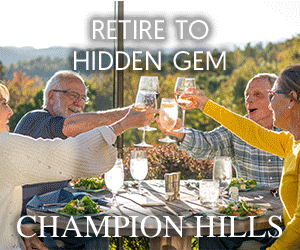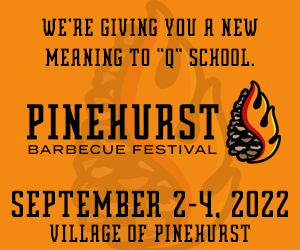By Kurt Dusterberg
SAS Championship officials hope to connect with more than just the golf crowd. Maintaining community involvement at the Champions Tour tournament the first week of October is critical to the mission.
“This event continues to have a very solid foundation in the community,” said tournament director Jeff Kleiber. “We’re trying to expand the presence of the event beyond just golf.”
Kleiber points to the Blue 5K, a running event sponsored by Blue Cross and Blue Shield of North Carolina. Participants run the back nine of the Prestonwood Country Club tournament course on Saturday — before the golfers begin the second round of the 50-and-over event. In its first year, the race fielded 200 runners. This year, the field may reach 800.
“These are people who want to support the Triangle Community Foundation and the YMCA, but don’t necessarily care about seeing the legends of golf,” Kleiber said. “They play their own role by being involved this way.”
Of course, golf will be center stage all week, and the 12th annual SAS Championship enjoys a reputation for attracting strong fields, with many players who had stellar careers on the PGA Tour. The returning champions alone include Hale Irwin (20 PGA wins, three majors) and Craig Stadler (13 wins, one major). With a total purse of $2.1 million, the SAS offers the sixth-largest payout among the 26 annual tournaments.
The tour – originally known as the Senior PGA Tour — has grown in stature since it began in 1980. As prize money and prestige have grown, more professionals have extended their playing careers.
“The competition is deeper,” said Kleiber. “Back in the 1990s, you would go into every week thinking, ‘Who is going to win, Hale Irwin or Gil Morgan?’ But in the last three or four years, the depth is there.”
Kleiber attributes the competitive balance to a shift in the culture of professional golf. By the time players are eligible to join the tour at age 50, they are still playing near their peak.
“There are more people who are staying fit and playing the PGA Tour competitively later into their 40s,” he says. “So they are coming to the Champions Tour more competitive. Also, the window for a victory used to be that guys needed to win in their first three or four years on the Champions Tour. That window is getting larger, where people are winning in their late 50s pretty regularly now.”
Despite the competitive level of golf, the Champions Tour offers a certain laid back vibe. There are no cuts in the three-round SAS Championship, and often the players aren’t dialed in like they were on the PGA Tour.
“I practice and prepare the same, but the atmosphere is totally different,” said Perry, who earned his second Champions Tour victory in Naples, Fla. in February. “The Champions Tour is very relaxed, very easy going. There’s a lot of storytelling. We hang out a lot together at night. We eat a lot of meals together.”
This year, the event will go head-to-head with three Saturday home football games for the local ACC teams.
“Instead of hiding from the fact that State, Carolina and Duke are all playing home football games that day, we’re trying to embrace it,” Kleiber said. “We’ve moved our 19th hole from the 18th green, back to where it was in the early years by the main tournament entrance by the first tee. We’re making it a larger tent and putting in more TVs. We want to make the 19th hole more of a sports bar feel.”
All the fan-friendly arrangements add to the experience, but golf remains the main attraction. Fans will expect to see the best out of their favorites, and the athletes will be happy to oblige. Perry had clear designs on defending his SAS title after back-to-back third-place finishes in August. That was before he struggled with his putter in the Boeing Classic outside Seattle.
“I got the yips with the putter. I couldn’t make it from a foot out. It was embarrassing,” said the affable Perry, who has won 14 PGA Tour events. “So that’s something I want to figure out before I come to the SAS.”
















